La Potence (the gallows) is a metaphor for the ultimate deterrance, like a "hanging judge" at one of the old court houses that used to have gallows right out in front of the court house.
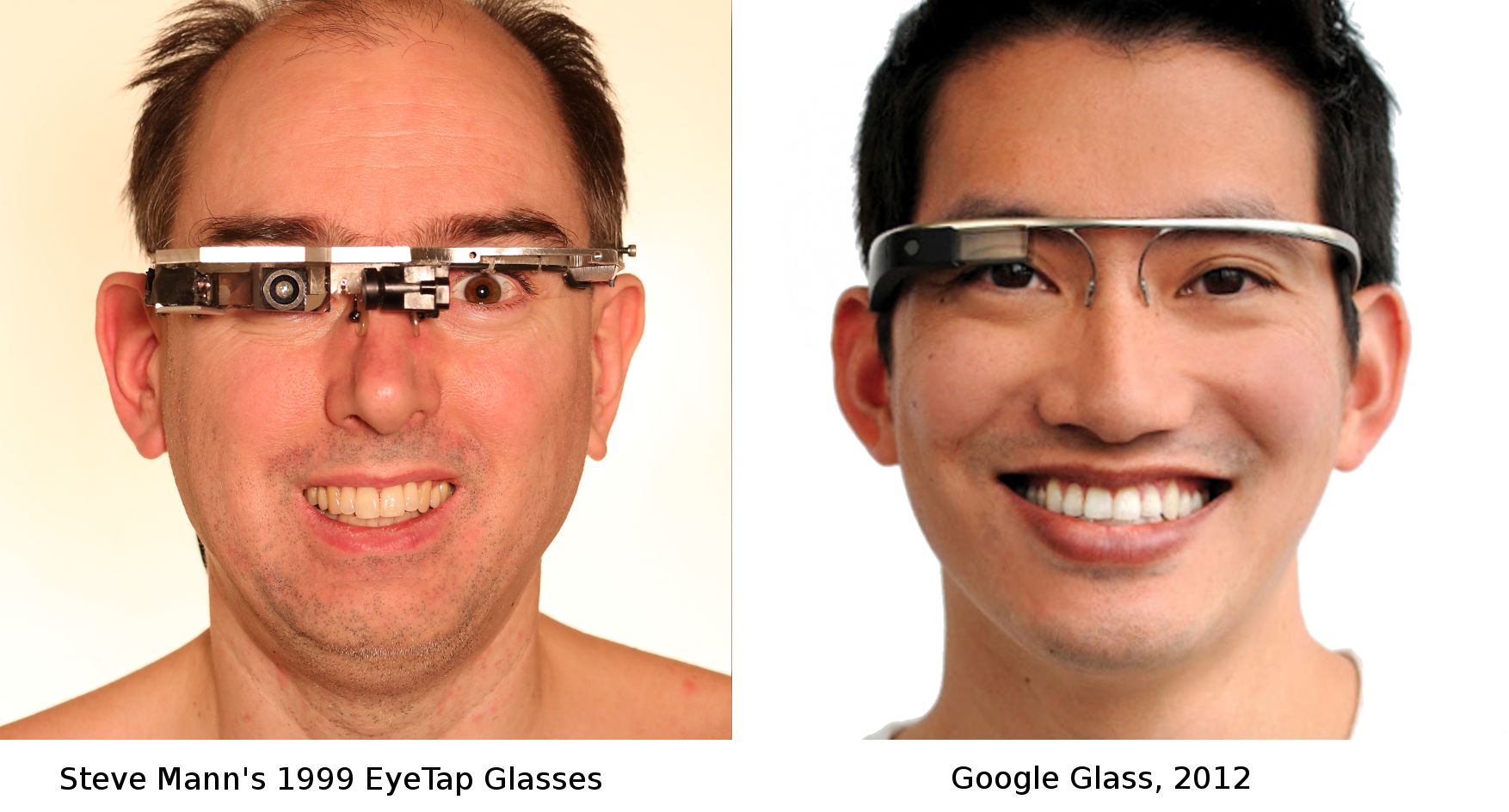
The meaning of these terms and their implications for a range of scholarship are, in fact, far more nuanced. From data analytics to Deep Packet Inspection (DPI) the forms and types of surveillance systems have changed, expanded and become at once both deep and broad, i.e. both more specialized, and more ubiquitous.
David Lyons (1994) has argued that surveillance is a necessary part of modern societies. In this paper, we consider this generalized term, "surveillance", as composed of two concepts:
Within the complex socio-technical milieu of the modern state, "velliance" can be further unpacked into "SURVEILLANCE" and "SOUSVEILLANCE". Both these forms of VEILLANCE are related to the relationships of power between the subject and the agent. Following its etymology, surveillance and "over-sight" may be thought of as approximate reciprocals of souveillance and "under-sight", in situations where they both represent a power relationship between an observer and the observed. In this sense, sousveillance may be described as "watchful vigilance from below". But surveillance and sousveillance go beyond a 20th century "us versus them" argument and need to be understood in the broader intellectual landscape. The nature of surveillance itself has been irrevocably changed by digitization, networking and ubiquitous computing. Surveillance has pushed well beyond Foucault's vision of its prison context. Surveillance has both diversified in the kinds of looking and the kinds of power relationships it involves, and it has become abstracted to the level of symbols, or binary codes, aggregated and reconstituted at will, by those who control it.
Whereas surveillance and over-sight once literally meant to watch from above, increasingly the word "surveillance" (and the word "oversight", its literal English translation) has taken on a broader meaning in both the "over" and the "sight" parts:
And sousveillance is not counter-surveillance. If we're being followed by a stalker late at night, we probably would be glad to have a hidden wearable camera with a secret "panic button" we could press to stream live video to our friends (and maybe to the police) AND we would probably also be glad there were cameras on the lamp posts as well (unless our stalker was a corrupt policeman being helped by those cameras).
Thus wearing a camera does not necessarily mean we're "shooting back" against surveillance. We might actually be in favour of both forms of veillance, especially in times of danger or high risk.
The data, information, knowledge, and wisdom we generate online and offline are increasingly the subjects of inspection, analysis, and aggregation by those in high places (governments, corporations, and other large organizations). Sur-veillance has become more of a matter of collecting and analyzing information rather than merely "looking down at people". Also the very act of looking, "veillance", has become abstracted into algorithms and databases hidden behind the data-shadows we leave behind. We are no longer "looked-at" from a hilltop or a high turret; we are now inspected years after our lives have changed, by images, etc., captured into government and corporate databases. Data from our present and past can be searched "looked-at" by authorities and corporations across the boundaries of time and space, e.g. from distant cities, or at times in the distant future. And the "looking" does not stop here: increasingly, algorithms are being taught to look ahead, to anticipate our potential actions. What has remained constant though is the relationship of power between the gaze of power and its subject, and that power favours the institutionalized agent, or agency, be it government or corporate or the hybrid entities ---- "covernments" and "gorporations".
Sousveillance, differs critically from surveillance in the relationship of power between the observing gaze and its subjects. Where the "sur" in "sur-veillance" embodies the metaphoric advantages of the perspective of a high vantage point, and of gravity, sousveillance faces these same conditions as obstetrical to overcome. The strategies by which souveillance is able to challenge the dominant perspectives and overcome the pull of corruption through established inertia, are the politics of souveillance. Can "looking from below" (sousveillance) provide the missing element that oversight alone cannot? Can under-sight remedy the power asymmetries of surveillance?
Sousveillance is very much a personal DIY (do-it-yourself) technology, in contrast to the more organized hierarchical top-down structure of surveillance. But the relationships of power, the politicts of sousveillance are not as linear
Consider the extent to which surveillance and sousveillance are approximate inverses of each other, by considering, separately, a "veillance" axis (watchfullness from either direction), and a "potence" axis (efficacy, deterrence, power, politics, etc.). In particular, we look at the residual-veillance, i.e. the degree to which surveillance and sousveillance do not exactly cancel one another out, as a measure of the opacity (or lack of freedom) in a society.
It may be useful to think of surveillance and sousveillance on the following axes:
Picture, for example, the typical courthouse of days not-long-ago, which would often have large gallows erected out in front of it. Gallows and gibbets were often placed at prominent locations in a city. Examples include the famous Tyburn Tree in London (a massive triple-branch gallows that could hang 24 convicts at the same time), and "Le Gibet de Montfaucon" high on a hill in France.
Gallows appear in much of our culture's idoms and popular media, with expressions like "to fall off the cart" or "hanged if I know". Walt Disney's "Hocus Pocus" opens with three witches on the gallows. The opening of Pirates of the Caribbean 3 features a child being hanged on massive gallows.
Foucault's book "Surveiller et Punir" outlines how surveillance is inextricably interwined with punishment and power relationships.
Artists Stephanie and Christina Mann (ages 5 and 9) built a conceptual art sculpture entitled "La Potence de la Surveillance" (see below) that touches on this theme:
La Potence (the gallows) is a metaphor for the ultimate deterrance,
like a "hanging judge" at one of the old court houses that used to
have gallows right out in front of the court house.
Broadly speaking, "potence" refers to the ability to "hang someone" (metaphorically) based on evidence gathered ---- a kind of power of the institutional document, instutitional ways of knowing discussed by Tagg (1988).
Surveillance and sousveillance can both be used as evidence in a court-of-law or in the court of public opinion to metaphorically "hang" (i.e. embarrass, convict, imprison, fine, or put on a virtual "public pillory") someone.
Control-theory gives us two elements that must be present to achive control:
In this sense, the observability is the surveillance and the controllability is the "potence" ("Guns, Gaols, Gallows, and Gibbets" so-to-speak).
If we think of surveillance and sousveillance as "vectors" then the residue that remains from imperfect cancellation between surveillance and sousveillance is what we might refer to as "potence" or lack thereof or need thereof.
Consider first the case where we have an exact cancellation between surveillance and sousveillance, as might be the case between equally "potent" parties, e.g. a small one-person shop in which the shopkeeper puts up a camera to stop shoplifting, and a small one-person sousveillance team, e.g. someone wearing a camera. Neither party wields the "gun" or the "gallows" so-to-speak. Surveillance and sousveillance approximately cancel each other out, assuming the shopper can use human rights laws to prevent the shopkeeper from preventing her from entering his premises wearing her camera.
Consider next the case where we have imperfect cancellation, e.g. a policeman with a gun and an attitude, who has editorial control over surveillance camera in a police station, where the ordinary citizen walks in wearing her camera. In this case the veillances may cancel, but the potences do not cancel, i.e. the policeman wields the "guns and gallows", which the citizen does not wield.
It is the latter case that we must focus on solving, i.e. this is where we require a kind of "citizen potence" of sorts. This is a key point, that sousveillance, like surveillance, is only as effective as the mechanisms (eg. media channels) that facilitate their information exchange.
We call this citizen potence "swollag" ---- "gallows" spelled backwards ---- a concept for sousveillance that is analogous to the "potence" of surveillance.
Publicization of malfeasance is one kind of "swollag", e.g. the citizen can publish a video that makes the policeman look stupid, e.g. "Officer Bubbles", the officer who arrested a girl for blowing bubbles because one of the bubbles hit him == physical assault. In this case, she was able to "hang" the officer in the court of public ridicule. A shortcoming of this "metaphorical gallows" of public embarrassment is that it might not be as economically sustainable as the "surveillance superhighway".
For swollag to be effective, it may need some kind of financial source of revenue with which to sustain itself. To continue with the gallows-metaphor, what we need is a way for retributive justice to follow, e.g. could the victim of Officer Bubbles somehow profit financially (or at least cover her expenses) at the expense of Officer Bubbles. Perhaps if she could have sold the footage for profit, the profits going towards her expenses or injustice. For example, perhaps what sousveillance needs is a big insurance company that could give out free wearable cameras and lower insurance premiums to those who use them, and the insurance company would sue the malfeasors. This model might be one example of adding "swollag" to an otherwise too-weak form of sousveillance.
Moreover, if surveillance pushes crime and corruption further up ladder the negative effect of the very surveillance pushing crime Upwards itself becomes more negative. In the limit, we get positive feedback and run-away corruption that leads to totalitarianism ---- making the negative effects of the surveillance even worse, and also requiring a greater amount of sousveillance to remedy or balance.
Thus when there is a risk that surveillance may feed back on itself in this way and "run away" sousveillance needs more "swollag" if it is to act as effective undersight. The higher the corruption the more swollag required of sousveillance, for it to be an effective strategy of undersight.
Now as the ladder of life 'as been strung-- Chim Chim Cher-ee, Mary Poppins
You may think a sweep's on the bottommost rung
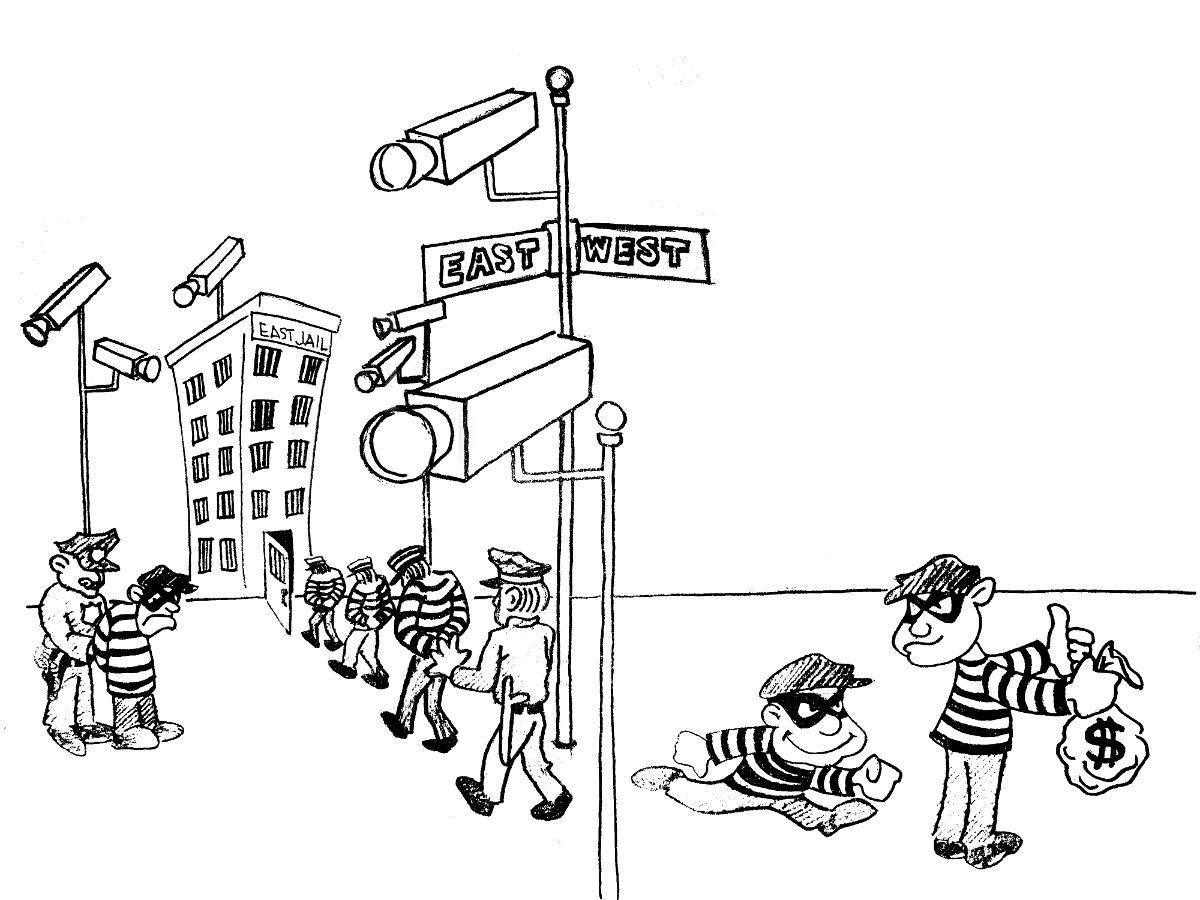
This could cause a Westward shift in crime's equilibrium, which may be due to two different phenomena:
A similar effect happens when we watch a video, movie or motion picture film. The movie screen itself is not moving, and the pixels on a television screen do not actually move, but, rather, the motion in a motion picture film is generated by the sequence of pixels (or projected light) turning on and off in the right sequence, that motion is generated on-screen.
Movement from the East side of a video screen or television to the West side is created by Eastern pixels being extinguished, followed by new (different) Western pixels being illuminated. This is the sense by which we mean something on the screen "moves West". Like the light-chaser, the pixels "chase" west, to create motion without actual physical movement.
Thus some criminals actually move West, whereas crimes move West by being stopped ("extinguished") on the east side, and and re-born (as new crimes) in the West-End.
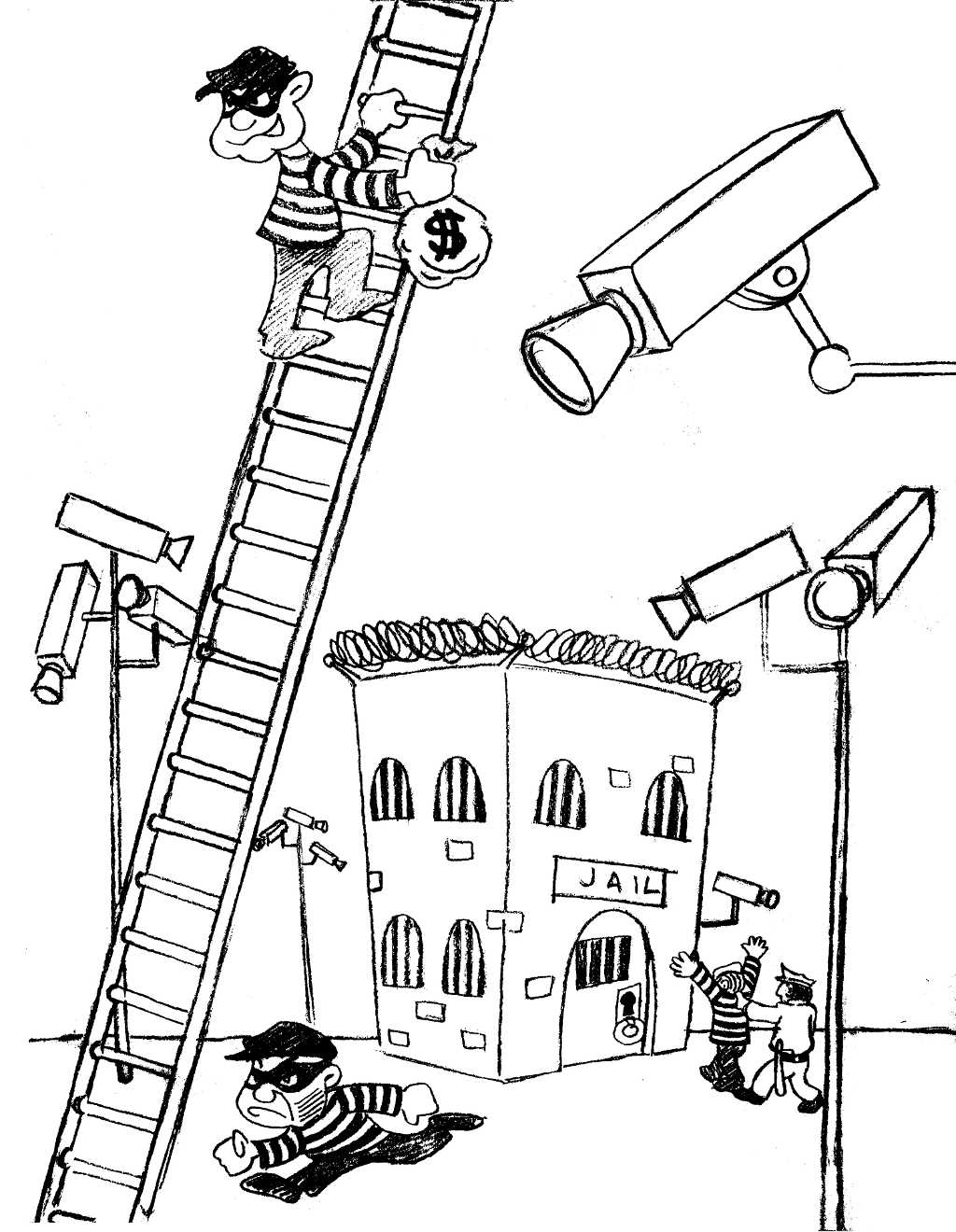
Does installing surveillance everywhere cause crime to move Upward, up the hiearchy? And what does that mean? It is obviously easy for a criminal to walk a few blocks West when cameras are put in the East-End, but how can an uneducated street thug possibly become a highly trained police officer and perpetrate corruption? While the East-West migration can happen in a matter of minutes, the up-down migration may take years, or never happen at all.
However, recall that there are two forms of motion: (1) migration; and (2) motion-without-movement. Thus crime may move Upward by the following means:
A SECURITY guard at one of Edinburgh's best-known visitor attractions used CCTV cameras to stalk a young female worker...This case raises some interesting issues, such as the conflict-of-interest in surveillance (e.g. CCTV footage mysteriously disappearing when under the control of police).James Tuff used the camera system ... to track his victim and then radio her with lewd comments.
Tuff eventually sexually assaulted Dora Alves ... He was fined and placed on the sex offenders register for three years. ... She said: "At first it was just the odd comment about my body; he would say things about me having a real woman's body ... "But soon after he would appear out of nowhere when I was cleaning in the toilets. ... as she walked to the canteen on her break and stopped to collect something from her locker. "Mr Tuff came out of his office and grabbed me from behind. ... She said CCTV footage which could have proved the incident took place had gone missing.
The fruits of our labours exist within a market equilibrium. When goods are easily stolen, they exist like Low-Hanging Fruit (LHF), and if there were such LHF everywhere, its price would be relatively low.
But when some or most of this LHF is eliminated, thus reducing the supply of stolen "fruit", the demand for it may continue to exist. When the demand remains and the supply is reduced, the price escalates, creates new opportunities for crime in higher places or insider-trading in stolen fruit. And ladders are needed to reach the higher fruits, there exists both (1) an increased incentive for thieves to climb such ladders; and (2) an increased incentive for those already further up these ladders to consider the possibility of stealing these higher fruits, because of their increased value arising from the fruit shortages created by eliminating LHF.
There thus exists a possibility for surveillance to facilitate corruption, and there certainly have been some documented instances of this. Quantification of this effect remains a topic of future research on the practices of sousveillance of institutional agents.
Moreover, there have been numerous documented cases of police destroying evidence that might incriminate them. The Tuff case above, where the CCTV footage disappeared, is not an isolated example. For example, in a case of mistaken identity, police shot and killed Jean Charles de Menezes, a Brazilian electrician, and then the police lied about what happened ---- claiming he was running from them, when in fact he was just calmly walking and did nothing threatening. The police seized the hard drives from four separate surveillance systems in the area, and later reported that all four hard drives were blank, i.e. that no data was recorded by any of the surveillance cameras in the area. Despite the fact that no surveillance recordings in the area survived, the incident was captured by sousveillance (i.e. by citizens with camera phones in the area). http://en.wikipedia.org/wiki/Death_of_Jean_Charles_de_Menezes
Indeed, Foucault essentially asked "who watches the watcher?" (1995).
Traditionally, oversight has been the immediate
answer. But, more oversight only pushes the potential of corruption
even higher up the proverbial ladder-of-life.
Oversight can shift crime even further up this
ladder, i.e. toward higher-level corruption (see below).
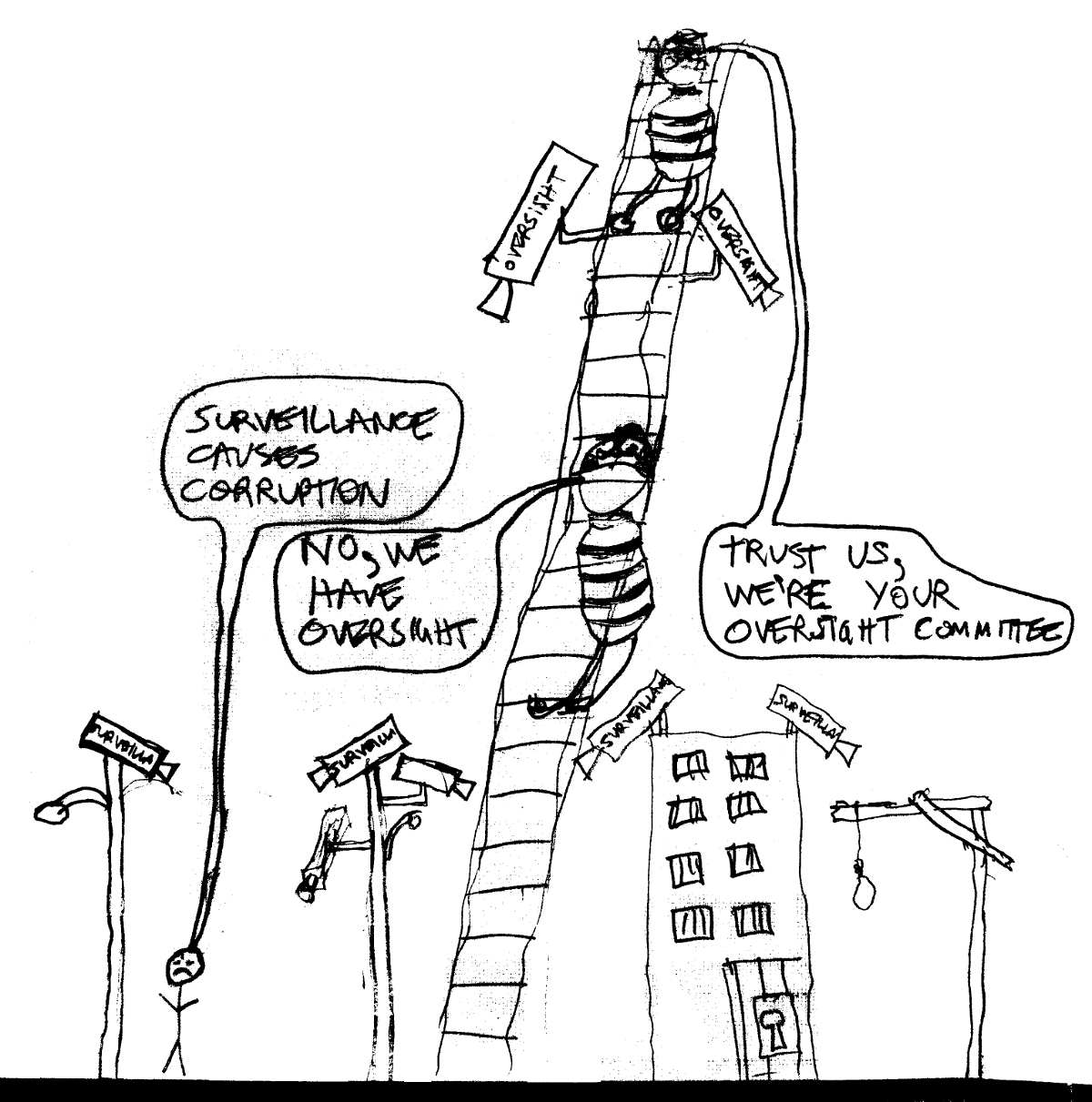
Foucault (1995) advocated an open society, where the mechanisms of
control and surveillance are open and subject to pubic scrutiny.
Ideally these would be part of a larger mechanism of "potence" that
mediates the tension between undersight and oversight.
This is not to say that surveillance is the cause of corruption, or that oversight is the cause of high-level corruption, anymore than saying that installing cameras in the East end causes crime in the West end. But surveillance often does leave the door open to corruption. In some sense, surveillance is like locking only some of the doors to crime (e.g. the basement doors), while leaving the upper doors wide-open.
Moreover high-level oversight, such as congressional oversight
investigating a corrupt Chief of Police, has the possibility,
by the same means, push this high-level corruption even higher,
up to the level of President or Prime minister (see below).
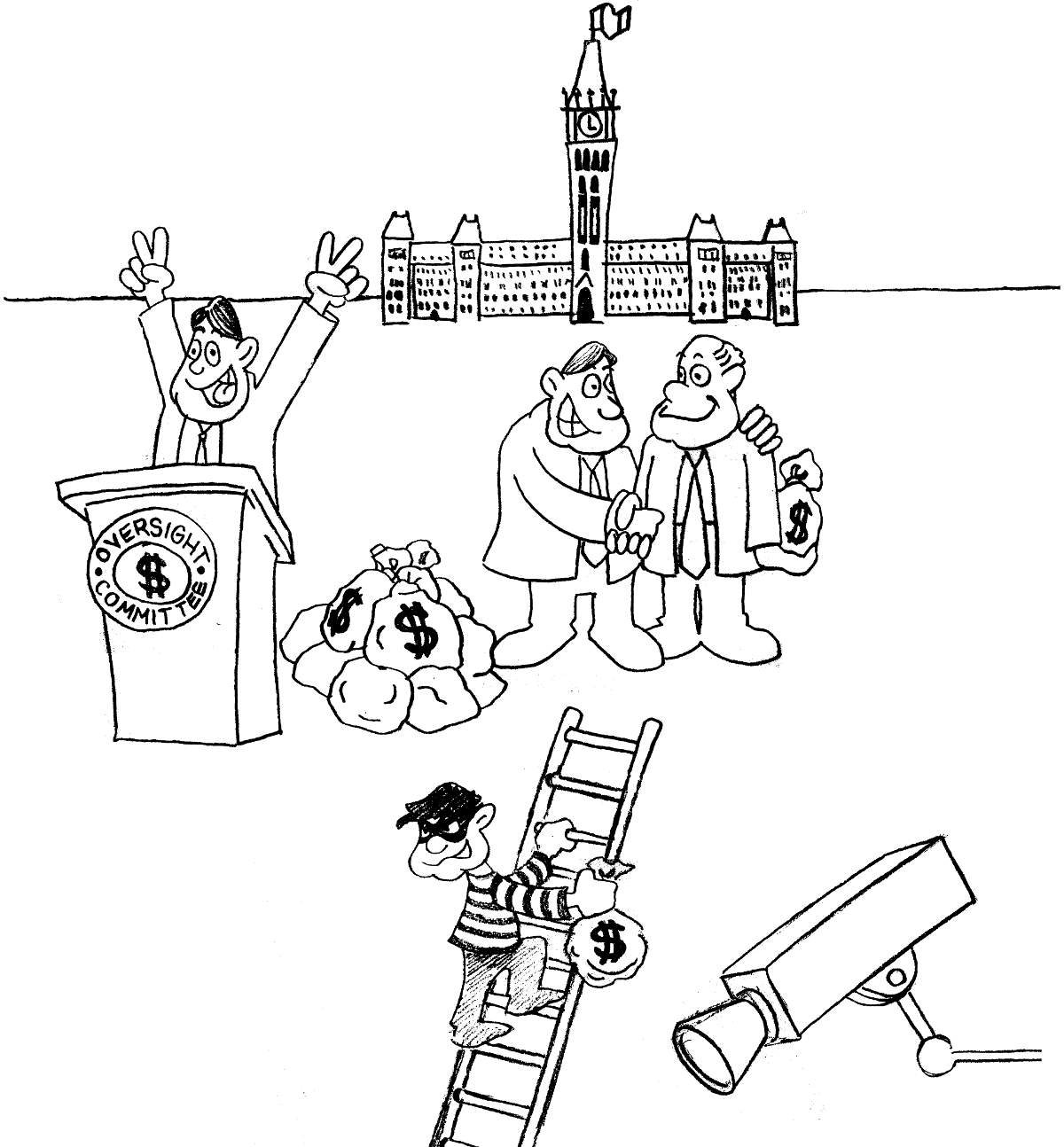
Of even greater concern is also the possibility that oversight may
push crime and corruption to more unseen height obscured by
the public eye. Indeed, massive investments in police infrastructure
and police oversight may actually create a massively secret and
powerful-yet-unaccountable force in society whose crimes are
much more far-reaching than any low-level street crime.
A society without sousveillance and undersight, i.e. a society with surveillance and oversight-only, may leave itself open to this Upward-migration of crime and corruption.
We believe that "a society with oversight-only is an oversight on our part".
We need some way to guard against the possibility that surveillance may push crime up into the middle rungs of the "ladder of life", and that oversight may push crime up to the top rungs. A proposed solution to this problem is sousveillance, in particular, inverse-surveillance, as a way of balancing an otherwise one-sided "surveillance-only" society. Inverse surveillance might, for example, include citizens photographing police misconduct, shoppers photographing shopkeepers, and passengers photographing reckless cab drivers from within the very cab that might, for example, be involved in an automobile accident. This sort of information, taken from below, then communicated and spread through a social/media network can achieve a level of sousveillance-efficacy ("swollag") that may result in a change in policy. An important aspect of inverse surveillance is that it emanates from individuals recording their personal experience and their immediate vicinity, rather than the recording/monitoring of individuals by an outside party.
The upward-gaze of sousveillance (see below) provides a possibility of
creating balance (equiveillance) between surveillance and sousveillance.
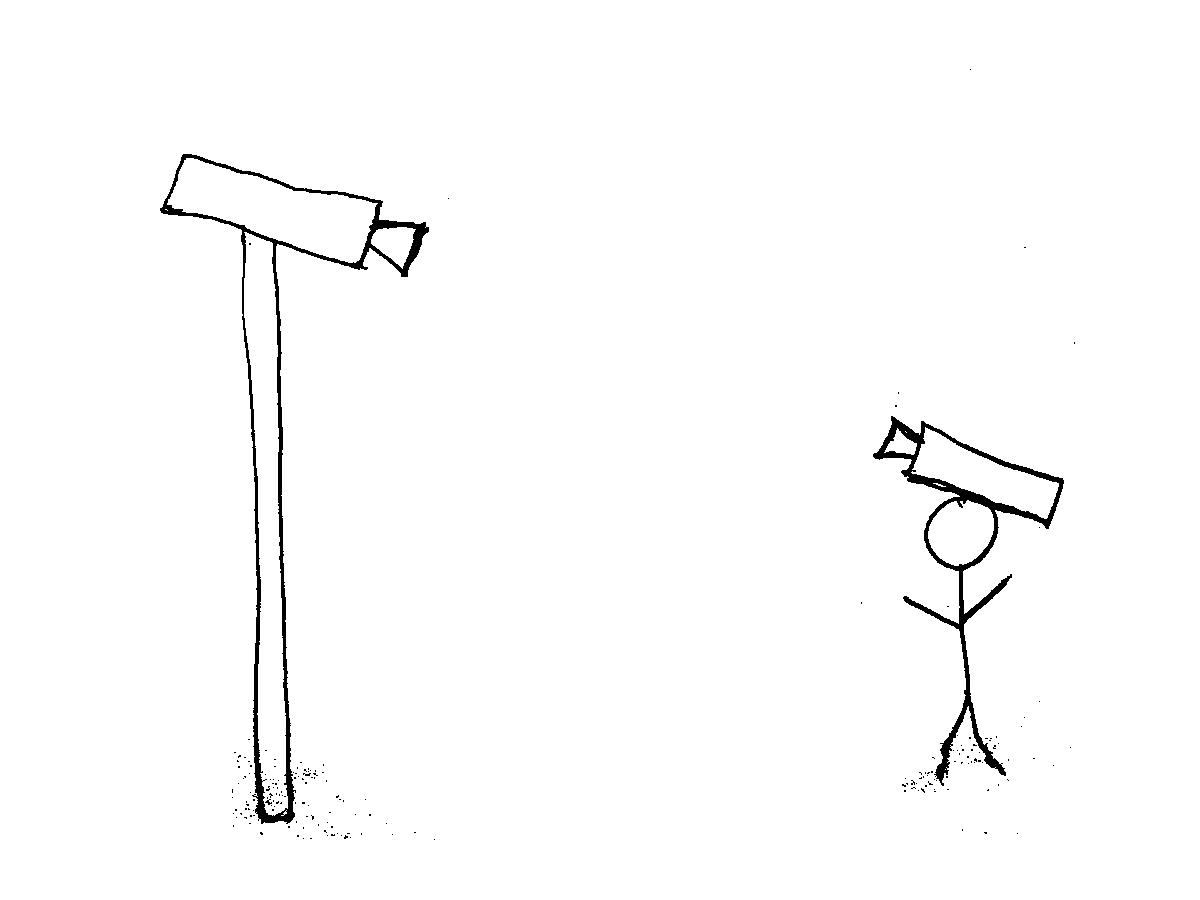
Placing those in the upper echelons of society over sousveillance
potentially allows all persons, not just those down at
street-level, to enjoy the benefits of a society with veillance.
Video surveillance networks and what have been referred to as "digital signage-networks" (Pam Dixion, "The One-Way Mirror Society", 2010) such as Intellistreets (six cameras and an LED pixelboard in every streetlight, giving every lamp post "people-counting" and face-recognition capability) have changed the public face of surveillance from a police-matter to a citywide surveillance+signage system. This gives the "eyes on the street" a new friendlier corporate visage. Digital signage personifies the once faceless surveillance cameras. Moreover, the new surveillance is green-technology, i.e. the streetlights automatically count people, cars, bicycles, etc., and dim or brighten according to what is happening on the street. How could anyone possibly object to video surveillance that saves electricity and the planet, even if it embodies homeland security as a concomitant cover activity (cite Mann, Linux journal, Jul 2000).
This trend is refered to in a number of research fields as "Things That Think (TTT)", "ubiquitous computing (ubiqcomp)", "pervasive computing (pervcomp)", "the internet of things", etc. [cite Ratto 2011]. This trend towards "smart" ambient computing also has the less discussed side-effect of producing minable data about our patterns actions and interactions; and perhaps more significantly, provide the infrastructure for as-yet-unimagined future surveillance practices. For example:
modern LED streetlights have video cameras in them
that "watch" what people are doing and adjust the lighting according to
use [Intellistreets, and Philips Lumimotion, for example].
"Lamps fitted with cameras detect the presence of cyclists or pedestrians and switch on the LED lights in turn, as the cyclist or pedestrian travels along the path. The Philips LumiMotion technology used means that the power output of the lighting can be increased gradually point by point from 10% in standby lighting to 100% ... whenever a presence is detected. The lamps are switched on at a rate designed to coincide with the speed of the cyclist or pedestrian."
Similar lights are being manufactured for indoor use as well
[Texas Instruments, and Lyrtech, for example].
Vision-based "smart lights" result in tremendous energy savings,
as they adjust the light output "intelligently" based on the number
of people present and what the people are doing.
http://focus.ti.com/download/aap/pdf/ios_lyrtech_brochure.pdf
Water is a unique and personal element in this context. When these same technologies are applied to water management, important new issues arise.
Some of our early work with water involved sensing and computation. For example, a new kind of sensor-operated faucet that used artificial intelligence to do object-recognition, and adjust the water according to sensed uses, was invented.
http://nguyendangbinh.org/Proceedings/CVPR/2001/CD2/Demos/08-mann/mann.pdf
It can distinguish the difference
between, for example, tooth brushing, hand-washing, or filling a drinking
bottle, and automatically adjusts the temperature, flow-rate, and
degree of aeration (frothiness) to suit the task that it senses
the user doing. See below.
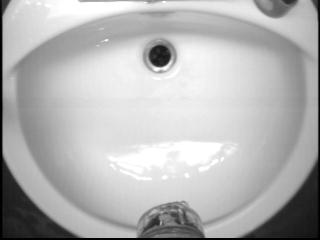
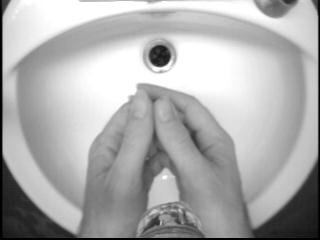
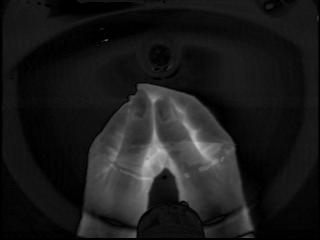
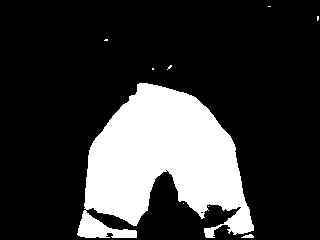
Experimental vision-based intelligent handwash faucet.
A miniature underwater or waterproof camera built into the faucet
and uses artificial intelligence and object recognition to automatically
select temperature, flow-rate, and aeration based on
identifying what the user is doing.
See Canadian Patent 2354113 for water management using
image sensors, processors, and control systems.
More recently a number of companies are now
using this vision-based water-sensing technology.
The vision-based water-controller is also used in showers to save water.
Vision-based sensing
in showers creates obvious privacy problems, and we had to invent
additional technologies to solve these problems. That in itself
requires that the research be cross-disciplinary, as it, by nature,
must involve social, policy, ethical, and legal disciplines in addition to
science, engineering, and mathematics.
Camera-based artifial intelligence systems are now used in water
centres around the world to do automatic drowning detection,
to count bathers (to automatically monitor bather-loads),
to do automatic slip-and-fall detection in public washrooms,
as well as to automate water flow and water management.
For example, Texas Instruments has developed a camera-based vision system
for use in washrooms, and Delta Faucet's latest washroom automation
devices (faucets, toilets, etc.)
use a pixel array rather than just a single sensing element.
These PSDs (`Position Sensing Devices'') result in fewer false flushes
and quicker-responding handwash faucets.
Additionally computer
vision technology is used on public beaches to automatically
count bathers (e.g. to automatically generate statistics of the number
of sunbathers verus the number of people in the water),
measure water height, rip currents, sand migration, and the like.
[``How Many People in the Sandbox? An Application of Video Imagery
to Quantifying Beach Use in Hawaii and Australia'', by David Revell,
ASBPA National Coastal Conference: Integrating Coastal Science and Policy,
Tradewinds Island Resort, St. Pete Beach, FL, Tuesday, 2009 Oct. 13.]
In this sense, sousveillance is "inclusive design"
(and also "participatory design")
for now it allows
those in high places to be, as subjects over sousveillance,
included within the benefits of veillance.
However, some persons in high places have opposed sousveillance.
For example, we see an antagonism toward sousveillance, with signage
like "please do not take video or photos" or "No video or photo taking",
even in open space that's under video surveillance as well as
visible from public walkways and surrounding buildings.
See for example, Island Resort: http://www.glogger.mobi/v/41952
which is, by way of its own surveillance cameras, in violation of its
own policy.
Many business establishements such as department stores and grocery stores
attempt to prohibit cameras and cellphones.
See for example: alicos.com
NO CELL PHONE IN STORE PLEASE:
The irony of treating cameras and cellphones as
contraband in semi-public places is that this trend seems to come
around the same time as the proliferation of CCTV surveillance
cameras.
But more and more people are using their cellphones, smartphones, cameraphones,
and the like as day-to-day technology they depend on.
For example, in our lab
we invented the EyeTap electric eyeglasses,
which can work as an "eyePhone" to help people see better through
eyeglass prescriptions downloaded to the eyeglasses, as well as
overlay of Google Streetview, and the like, into one's reality stream.
Wearable cameras and eyelectric eyeglasses help people see
better.
In the future, when a security guard demands a patron remove
their electric eyeglasses, the guard may be liable when the patron
trips and falls. The authority of the guard does not extend to
mandating eyeglass prescriptions of their customers.
The old mechanism of anti-sousveillance is increasingly
becoming impossible in a world of information, ubiquitous cameras, and
widespread unstoppable sousveillance.
The irony in these supermarkets that prohibit cameraphones is that they
often sell products that have
have QR codes and the like that encourage customers to use their camera
phones to photograph them and look up product information that might help
them in their purchase decisions:
"SCAN ME... Use your smartphone to scan this QR code..."
says the box in a store where cellphones and cameras are forbidden.
Consider, also, for example,
QR codes in a film shown in a movie theatre.
In this case patrons would be both forbidden from, and required to,
photograph the content on the movie screen.
The inherent conflict-of-interest inherent in surveillance has often been
shown when police wrongdoing is captured by video.
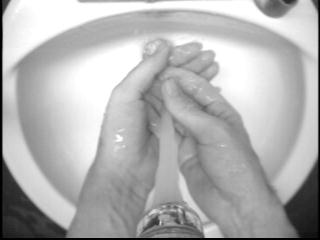
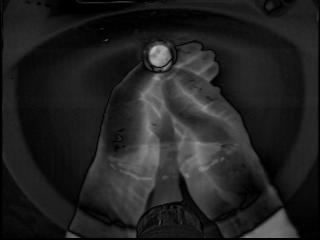
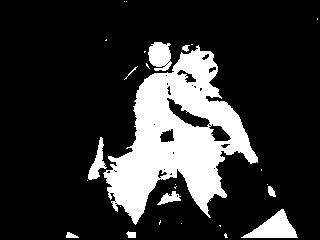
Inequiveillance
Increasingly cameras are encroaching on public and publically accessible
spaces, and yet little is being done to promote public rights in to their
information or to protect the interests of individuals.
Indeed, surveillance is far from neutral technology. It carries with it
an inherent conflict-of-interest due to the fact that its view-from-above
is usually managed by those in high places.
Should surveillance capture wrongdoing by those in high places,
the data often mysteriously disappears, or at the very least is hard
to obtain by those in lower places.
Souseillance as inclusive design
Sousveillance fills in an important gap in the one-sided
view of surveillance. Together surveillance and sousveillance
creates a new veillance that has the potential to be more fair and
balanced, and to be more inclusive, i.e. to include those in high places
into the world of accountability.
http://www.glogger.mobi/v/85249
http://www.glogger.mobi/v/107747
http://www.glogger.mobi/v/67881
http://www.glogger.mobi/v/67879
http://www.glogger.mobi/v/132776
"On Memorial Day 2011, Narces Benoit witnessed and filmed a group of Miami police officers shooting and killing a suspect...
officers who handcuffed him and smashed his cell phone,...
Officers again took his phone, demanding his video. He said they took him to a nearby mobile command center, snapped a picture of him, then took him to police headquarters and conducted a recorded interview while he kept the [memory] card in his mouth....
So now the cops are committing armed robbery?
...
Police have a hard job but acting like thugs will make things worse. There will be more and more "hidden" video with all the technology available. The police in this situation should be sued for STEALING AND DESTROYING private property.
- Lisa Rose-Hawkins, Abilene, Texas, 07/6/2011 16:50
"
["Give us your phone or else: The moment police pointed gun at head of innocent witness who had filmed cops killing driver with 100 bullets", By MARK DUELL, ]
http://www.dailymail.co.uk/news/article-2000366/Moment-cop-pointed-gun-head-innocent-witness-filmed-shooting-Florida.html
Thus there is an abundance of space "over which the police and CCTV systems have exclusive photographic rights" (Möller). In the past, the "always-on" cameras that watched us were mainly "archi-centric" (part of the architecture, i.e. attached to buildings and lamp posts). But now cameras are also becoming human-centric (attached to people) -- not just camera phones, but also wearable cameras. In 2004 Neil Harbisson, a colourbind arts student who always wears a camera as a seeing aid to see colour, had a passport issued with his "eyeborg", and similiarly, in 1995, Mann also had a passport depicting his "cyborg self". In both cases, doctors' documentation was required. Many of these seeing aids provide wayfinding (e.g. Google Streetview overlaid on top of reality) and also function like the "black box" flight recorder on an aircraft by becoming a personal safety device. We have also built implantable camera systems for the visually impaired, as well as "cyborgian primitives" camera-based implants as body art ["Cyborg...", Randomhouse, Mann 2001].
We look at the way individuals will participate in managing their own identity and personal safety + persona == not as passive surveilled masses, but as participants in the new "*veillance" (surveillance AND sousveillance). Does this veillance better capture the dynamics between surveillance and sousveillance through "potence", the infrastructures that support a balance of power towards a state of equiveillance? Like the small town in which the sheriff knows what everyone's up to but everyone knows what the sheriff's up to to too. Or do self-created personas and DIY bodyart force us to rethink the question of participatory panopticon? Or where docile bodies can look back at the guards to monitor the mechanism of their self-imprisonment?